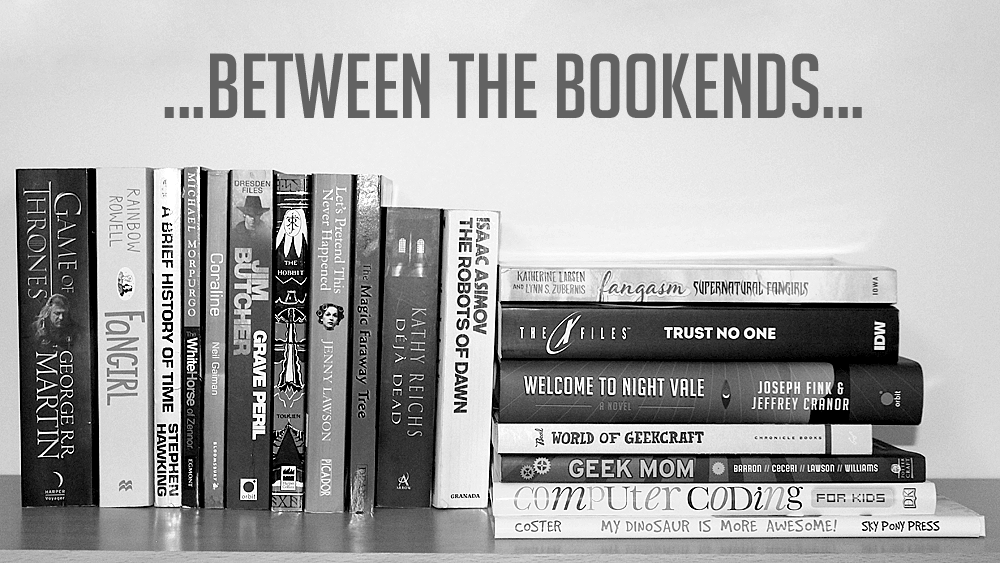
In this month’s Between the Bookends, Sophie, Lisa, Missy, and Rebecca share ten of the books that have kickstarted their 2019. From breakfast recipes to Ancient Greek mythology, magical hotels to reflections on creativity, they hope there’s something you’ll enjoy as much as they did.
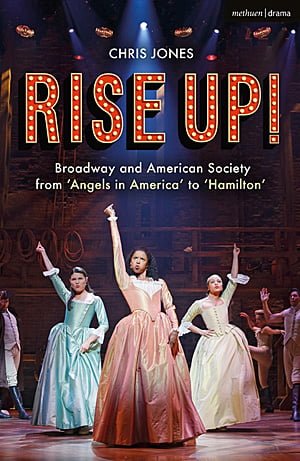
Rise Up! by Chris Jones
Love it or hate it (and Sophie’s firmly in the former camp), there’s no denying the cultural impact of Hamilton. The musical did the unthinkable, taking Broadway by storm with everyone from critics to suburban housewives to presidents raving about its centuries-old story made new again through a diverse cast and modern music. But, despite initial appearances, Hamilton didn’t come out of the blue entirely. For decades, Broadway has been laying the foundations with other shows that brought politics, current events, and deep cultural issues to the stage.
Rise Up! by Chris Jones is the story of those shows. Chapter by chapter it looks at a wide array of Broadway productions that came with an important message. These are often difficult subjects; the book looks at the HIV crisis through Angels in America and Rent, 9/11 through Metamorphoses and Come From Away, and current politics through Boulevard of Broken Dreams. A chapter focused on The Lion King explores how racial diversity broke through into the mainstream, while Spider-Man: Turn Off the Dark looks at what happens when Broadway goes too far. There’s even a look at how Broadway went meta in shows like Avenue Q and Monty Python’s Spamalot.
You don’t need to have seen the shows discussed here to appreciate this book, but Sophie will admit that it helps. She found herself far more engaged with the chapters that discussed shows she had the privilege to see—never in their original Broadway incarnations, but in their UK performances. It also added several shows to her “must see” list!
Rise Up! is a fabulous book for anyone interested in Broadway theatre and its ability to both reflect and create culture.
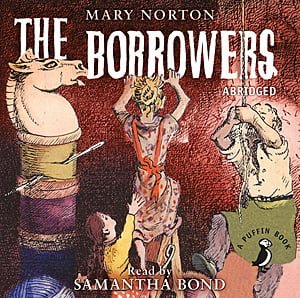
The Borrowers by Mary Norton
Sophie’s next book was an audiobook provided by Audible. The Borrowers by Mary Norton was her book club’s choice for December. It’s a story she was familiar with thanks to the 1992 BBC drama series she watched as a child on Sunday evenings, and one you might know better as the inspiration behind Studio Ghibli’s The Secret World of Arrietty.
Borrowers are small people, only a few inches tall who live in old houses and “borrow” items from the Big People who live there. They use blotting paper as carpet, cigar boxes to build rooms, acorns as teacups, and hang postage stamps on their walls as art. The Borrowers follows the Clock family—Pod, Homily, and their daughter Arrietty—who live under the floor of the kitchen in an old English country house. The greatest fear of a Borrower is to be “seen” by a “human bean,” but when Arrietty strikes up a friendship with a human boy who has moved into the house, it transforms both their worlds.
While The Borrowers could easily be seen as rather dated these days, the core story holds up remarkably well more than 60 years after it was written. We are all attracted to the idea of miniature things—model railways, dollhouses, bonsai trees, etc—and the idea of a tiny race of miniature humans living in secret among us is as intriguing today as ever. Sophie also found the ending, which leaves much of the story ambiguous, interesting as it leaves it up to the reader to decide how much—if any—of the story was true.
With four sequels that continue the story of the Clock family, this is a gem of a tale for fans of Enid Blyton, Beatrix Potter, and other traditional British storytellers. Sophie will also be making time to watch The Secret World of Arrietty ASAP.
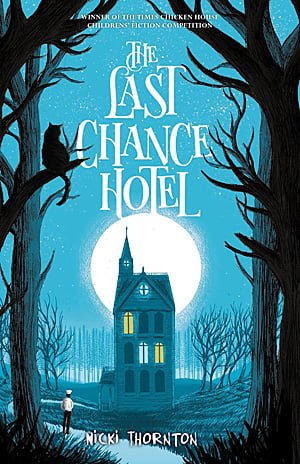
The Last Chance Hotel by Nicki Thorton
Book number three for Sophie was The Last Chance Hotel by Nicki Thorton, a middle-grade mystery novel with added magic. Seth is a put-upon kitchen boy at the Last Chance Hotel where he lives and works under the thumb of the unpleasant Mr. and Mrs. Bunn and their even worse daughter Tiffany.
When the hotel hosts a gathering of mysterious people, Seth thinks his cooking might finally earn him a way out of his miserable life. However, when VIP guest Dr. Thallomius drops dead after eating Seth’s dessert, instead of an escape, Seth finds himself facing life in prison. Soon enough, Seth discovers that there is magic afoot at the Last Chance Hotel. His cat has started talking to him, as have the walls, and it seems as if there is no one present who isn’t up to something. Seth must discover who really murdered Dr. Thallomius, but the more evidence he uncovers, the guiltier he seems.
Naturally, this book has echoes of Harry Potter about it with a mistreated boy discovering there is magic in the world around him, but it doesn’t quite reach up to Rowling’s heady heights. The plot is rather too predictable and none of the characters grabbed Sophie’s attention except Nightshade the cat, who didn’t appear nearly enough. She just found it hard to take it seriously when a terrible and tragic event in the magical world’s recent history goes by the name “The Unpleasant” and its apparent victims are referred to as “Missing, Feared Exploded.”
The ending made it clear that the author is setting up for a sequel but Sophie doubts she’ll be picking any future volumes up. While she imagines young readers might enjoy this, those who have already been exposed to Potter and other similar series will likely find it lacking in depth.
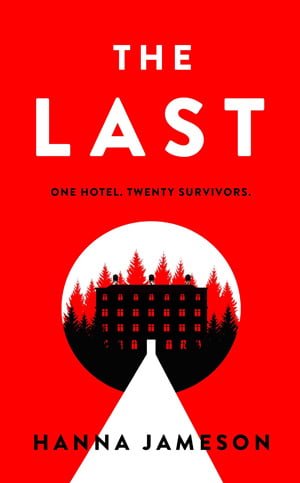
The Last by Hanna Jameson
Next for Sophie was The Last by Hanna Jameson. This post-apocalyptic tale is set in a Swiss hotel where a group of guests and staff have holed up after seeing nuclear bombs drop on the world’s major cities via their phones and TV. The group gradually declines in number leaving a core of around 20 trying to survive together as they have no better place to go.
The book’s protagonist is Jon, a history professor from San Francisco who was staying at the hotel because of a conference. After the group discovers the body of a little girl in one of the water tanks on the roof, Jon makes it his mission to find out who killed her. He also decides to keep a record of each day beginning with the day the bombs drop and his record is the book itself. The Last is frighteningly insular as the group of strangers tries to figure out how to work together despite not really knowing or trusting one another. It’s a slow-burning tale of fear where everyone has read Lord of the Flies and finds themselves wondering if the person in the next room is going to be the first to turn savage.
Throughout the book, Jon interviews his fellow guests and we begin to get a sense that everyone in the hotel was “meant” to be there that day. There are characters with unnerving stories to tell, and Sophie was looking forward to seeing how all these threads came together, which made it all the more disappointing when they just… didn’t. The girl’s killer made very little sense and many of the threads were simply left hanging.
Sophie found the ending of The Last to be a letdown on what had, otherwise, been a great book, and she doesn’t know if she can recommend it simply because of that.

Rare Books Uncovered by Rebecca Rego Barry
Finally, Sophie got around to finishing Rare Books Uncovered by Rebecca Rego Barry. This collection contains 56 true short stories of people who found unexpected and valuable treasures in unlikely places. Vintage comics, first editions, and historical documents, there’s a bit of everything in here.
The stories come directly from the people who made the discoveries as Barry interviews them to hear their version of how they came to acquire such amazing items. Many were found at estate sales or even when driving past yard sales, others shoved to the back of shelves in bookstores, and one was discovered hidden under the eves of a house by contractors. The nature of the book makes it great to dip in and out of, and every page feels positive and full of enthusiasm for its subject. It is a book filled from cover to cover with hope.
This is a book that will have you racing out to the next estate sale you hear about in hopes of uncovering a Shakespeare First Folio worth millions (hint, the odds are definitely NOT in your favor). However, while Rare Books Uncovered is careful to remind readers that amazing discoveries are few and far between, it also thrills in reiterating that much-loved quote from Cadillac Jack, “anything can be anywhere,” encouraging those with the desire to hunt that there is nothing to say they won’t be the one to find the next item that will enthrall the book collecting world.
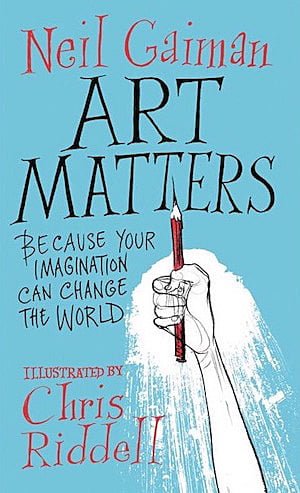
Art Matters: Because Your Imagination Can Change The World by Neil Gaiman and Chris Riddell
Lisa wouldn’t say she was disappointed when she opened her copy of Art Matters: Because Your Imagination Can Change the World by Neil Gaiman, but it wasn’t what she expected. As someone who reads essays and texts on writing and art, she was expecting another textbook style nonfiction. Instead, Gaiman’s thoughts on creativity, accompanied by Chris Riddell’s fun, sketchy illustrations, were more in the style of a journal or diary.
Each of the four commentaries in the book were previously published or given as a talk. Collecting them together in illustrated form made them more accessible and conversational. In these commentaries, Gaiman not only touches on the importance of writing, imagination, and the creative process and “making something new” in any art form, but also why reading for pleasure is so important. He also talks about his own experiences visiting libraries and how helpful and encouraging the librarians were to him when he was a boy. “They treated me with respect,” he said. “I was not used to being treated with respect as an eight-year-old.”
Lisa made sure not to read it all in one sitting, as it would have taken less than an hour to breeze through, but instead read it in short hops, marking the pages she wanted to copy to give to her children and friends or to post around her workspace for encouragement. Gaiman’s simple collection brought up some very complex truths, including Lisa’s own pet cause: literacy. “People who cannot understand each other cannot exchange ideas, cannot communicate,” Gaiman said. “The simplest way to make sure that we raise literate children is to teach them to read, and to show them that reading is a pleasurable activity.”
Lisa couldn’t have said it, or written it, better herself.
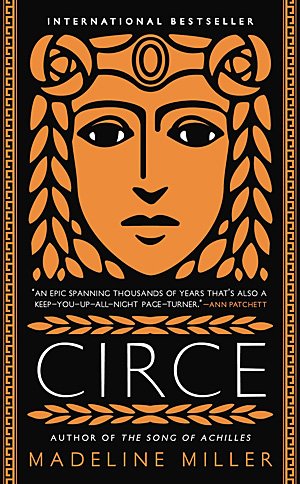
Circe by Madeline Miller
Missy finally caught up on some long overdue library books this month. First up was Circe by Madeleine Miller. This is a re-imagining of the life of the enchantress and daughter of the Titan sun god who, according to Homer, bewitched Odysseus on his journey home from Troy. That’s only part of the overall plot of the novel, though, which follows Circe from the halls of her father’s home to the island on which she’s exiled and where she learns her calling as a witch.
Miller’s style weaves magical realism into the practical details of a woman fighting to find her place in the world. GeekMom Rebecca reviewed the book in depth; Missy would like to add that she was struck by the characterization of Odysseus as suffering from the classic symptoms of PTSD. This was very much shown-not-told really, not even mentioned as such. It fit so well with the events laid out in The Odyssey, though, that once she thought it, she couldn’t not see it again and again and again, in everything from his short temper with his men on the island to the ultimate end of his life as told by Telemachus and Telegonus, his sons. It added an extra layer of sadness and tragedy to the life laid out by Homer.
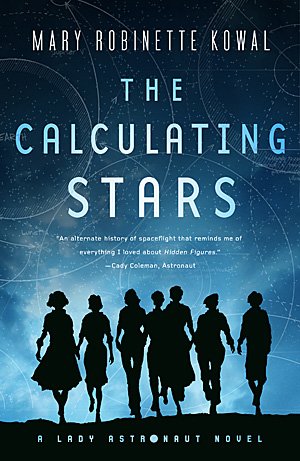
The Calculating Stars by Mary Robinette-Kowal
Next for Missy was The Calculating Stars by Mary Robinette Kowal. This is an alternate history of the space program, kicked off by a meteorite striking near Washington, DC in the early 1950s. This precipitates a climate disaster that forces the need for space exploration before Earth becomes uninhabitable. The novel centers on Elma, a former WASP pilot and one of the human computers of the space agency and her husband, the lead engineer, as they first survive the strike and then become part of the effort to build the international space program.
As an engineer herself, Missy really appreciated the in-depth research that went into the richly imagined setting of the space program. She also can’t remember the last time she was so completely sucked into the first act of a book with the meteorite strike. (She didn’t miss her stop on the train, but it was close!) She also appreciated the intersectionality of the book, where “all mankind” wasn’t just white, Christian, and male, but included characters of diverse backgrounds and experiences, which she found to enrich the narrative voice.
As usual, Missy thought the author’s notes on how she wove historical and scientific detail into the fictional world were almost as much fun as the story itself. For even more fun, check out the author’s post on her favorite bit of the novel.
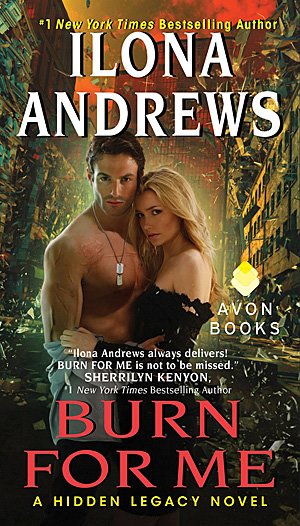
Burn for Me by Ilona Andrews
And finally, Missy read the first book of the Hidden Legacy series, Burn for Me by Ilona Andrews. This is an alternate-universe, paranormal romance set in a roughly contemporary world where magical abilities have reshaped the power structures of society.
The series is heavy on the mystery-solving and very slow-burn on the romance, but Missy is mentioning it here not just because she inhaled it like candy (so if Ilona Andrews writes your jam and you’ve somehow not started this series, go for it) but because she thought it handled a power imbalance between the romantic couple with an uncommon care. This trope often feels fairly squicky (for lack of a better term), especially when the female half of the couple is young and inexperienced and the male half… isn’t. She’s not naming titles, but vampires usually figure into this equation. Here, though, while the hero was the head of one of the Families and a strong, scary magic wielder, the heroine was definitely not that all-too-familiar dewy-eyed ingenue who needed to be tutored in the ways of the Force (to really mix metaphors.) She learned things from him because they were dealing with a society he was familiar with, but at the same time, she knew who she was and what she valued. She was her own person and took steps to keep it that way no matter how strong the attraction was (it’s a romance novel, the main couple is always madly attracted to each other). All too often—even with wildly popular and well-reviewed novels—Missy doesn’t find that to be the case, so she wanted to cheer that on.
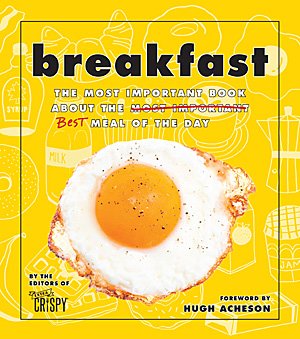
breakfast: The Most Important Book About the “Best” Meal of the Day by The Editors of Extra Crispy
While having a “bookstore date” with her husband, Rebecca Angel perused the cookbook aisle and found breakfast by the editors of Extra Crispy, a website pouring love like maple syrup over the first meal of the day. With its bright egg-yellow cover (with a perfectly fried egg photo), Rebecca squealed in delight. She loves breakfast. No, adores breakfast. Maybe this is because she is a morning person, and has happy energy to pop a sweet potato in the oven upon waking, which fills the house with good smells and is amazing on a winter day sprinkled with granola on top and butter, oh, the love of butter. What meal uses as much butter as breakfast?
But enough about Rebecca: the book. The book is so fun. Even if breakfast takes place near lunch, or dinner, or as a late night snack, this book has plenty of recipes from sweet (Apple and Date Strudel with Tahini-Honey Glaze) to savory (Texas Red Chili and Eggs) to basics (the secret to perfect pancakes) and dishes you’ve never heard of (Shakshuka, a Tunisian dish with poached eggs in thick, spicy tomato sauce.) Yes, the photos are drool-worthy, which is a must for any cookbook, but unlike many that sit on the shelf with only one or two pages with splotches on them, breakfast will be well used over the years.
In addition to recipes, the editors wax poetic throughout the pages of this book. There are essays on breakfast memories that are funny and thoughtful. Rebecca has kept the book out this week and other family members and visitors have all picked it up, eyes widened in delight. “So that’s how you make diner toast!” “Oh, my, god, I have to try this. Can I borrow your book?” No. Buy your own copy.
GeekMom received some items included here for review purposes.
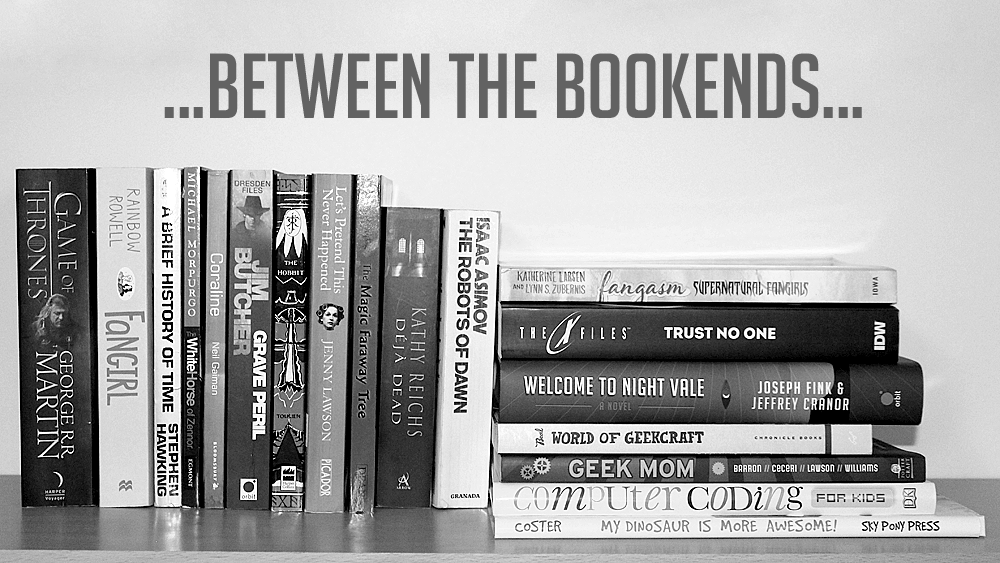

There are a lot of book reviews on the site – https://www.genuinewriting.com. i recommend reading it, this site really helped me in the session.